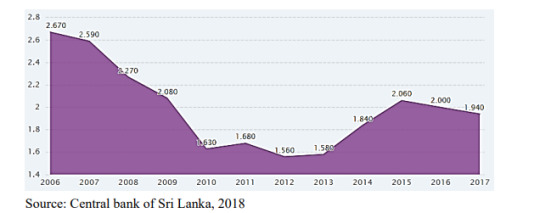Don't wanna be here? Send us removal request.
Link
0 notes
Video
tumblr
Drive Link - https://drive.google.com/drive/folders/1PH1sHQuMx1ACWrquASbOzFXEz0kkSP4E?usp=share_link
Voice - https://speechify.com/text-to-speech-online/?landing_url=https%3A%2F%2Fspeechify.com%2Ftext-to-speech-online%2F
1 note
·
View note
Video
tumblr
Unemployment Animation
Background Song - Eminem - Sing For The Moment(https://www.youtube.com/watch?v=D4hAVemuQXY)
4 notes
·
View notes
Text
In Production...

1 note
·
View note
Video
tumblr
Started final Editing...
0 notes
Text
Finally Completed All Drawings

0 notes
Text
After so many setbacks...

0 notes
Text
The storyboard For Unemployment


0 notes
Text
Unemployment
Courses of unemployment
Almost all economies strive to achieve a speed economic growth while reducing the poverty, minimizing inequality, introducing new technology and abating the unemployment rate. Here, the unemployment is most challengeable in the economy. None of economy can zero their unemployment rate in the economy. However, economies can address to the root courses of unemployment and take actions to increase employment rate. The unemployment of an economy may rise from the labour supply or demand level. Some of major reasons for the unemployment of Sri Lanka have discussed below.
• Skills mismatch
In the contemporary business world, the technology and the skills are rapidly changed. Nowadays, many economies are suffering from skills mismatch between the job requirement and the employee skill set. Here, the economy has the employment opportunities, but the workforce has not adequate or requires set of skills to perform the prevailing employments. Further, this reason can be extended more by identifying vertical mismatch and horizontal mismatch. In Sri Lankan economy it is common these types vertical and horizontal mismatches due to the insufficient workforce to higher value-added jobs. Many privet sector business leaders identified the reason for this mismatch is the weaknesses of the system of higher education system of Sri Lanka. They are complaining that the content and the quality of the prevailing education are weak to inculcate the modern skills, aptitude, and job orientation in the labour force.
• Economic recession
Economic stability and the growth directly impact to the employment rate of the economy. In the period of economic recession, the economy has to shrink its business operations, and this will lead to increase the unemployment rate in the economy.
• Waiting for queue
Sri Lankan people more prefer to have a government sector job than the privet sector job due to the job security and the after-retirement benefits. Thus, people wait in a queue for government jobs even though they receive privet sector jobs.
• Factor market distortion
Factor market distortions affected by strict labour laws, influence of union and low labour productivity. Normally, labour is more expensive than the machinery (capital) for which various incentives are given to promote industrialization. However, this scenario is true only in the case of unskilled labourers since those labour can be substantiable with machinery. In other hand, it is not true for skilled labour since machineries and skill labour are complementary and as a result, capital intensity increases employment generation for skilled labour.
• Lack of innovations
Research and development are a key consideration in the economic growth and the development. The prescribed ratio with regard to research and development for developing country is 1% of country’s GDP. In Sri Lanka’s ratio is only approximately 0.1% and this is also mainly related to the public sector. As a result, business expansions are highly limited resulting in less employment generation.
Unemployment with covid 19
The COVID 19 new corona virus pandemic emerged in China 2019 as a health crisis and morphed into a global economic crisis with a drastic impact on the public health, commercial activities, employment, and the trade. The International Labour Organization identified the criticalness of this pandemic and it described the COVID pandemic as the worst global crisis since the Second World War. The pandemic adversely affects to the almost all industries not only in Sri Lankan economy but also in the global economy. When it comes to the Sri Lankan context, the country was frequently imposed the curfew and lockdown to prevent the spread of Corona virus in the first quarter in 2020. The country placed curfew and lockdown strictly for the period of 52 days from 11th March 2020 with the first COVID case reported. Many Sri Lankan employees lost their jobs in immediate after the lockdown and curfew. Statistics shows the total number of jobs in the economy tight by 160,996 in the first quarter of 2020 (Mel & Perera, 2020). The actions like lockdown, curfew, closure of airports, and other preventive actions were impacted to the unemployment matrix of the country while increasing the quarter rate up to 5.7% from 4.5% of the last quarter (Department of Census and Statistics, 2020). Declining industrial production, manufacturing and service sectors remarkably contracted due to COVID pandemic and damaged to the revenue stream of the companies. This directly impacted to the increment of the unemployment rate in Sri Lanka. By looking at the past 10 years’ statistics, Sri Lanka reported less than 5% rate of unemployment in every quarter except the quarter 3 in 2019, following to the Easter Sunday attack. The curfew continued for more than 40 days and into the 2nd quarter before being lifted on 11th of May 2020. The impact of this situation to the Sri Lankan unemployment could be quite sever, given that 24.8% of employed labour force report themselves as being daily wage earners.
The concepts of economic growth and the unemployment interconnected and a drastic impact of COVID pandemic was happened to the economic growth of Sri Lanka. A significant decline in economic activities and product and service demand will lead to more retrenchments. The effect is more cruelly felt by unprotected employees. At Present, more than 1.7 million temporary workers in the private sector are at the risk of facing drastic wage cuts and layoffs. In the coming months more job losses can be seen due to the negative outcome of COVID 19 while increasing the unemployment rate of Sri Lankan economy.
Recommendation
1. Human capital development.
On of the most successful solution for unemployment in any economy is uplifting the knowledge, skills, and the experiences of its people so that, it makes a qualified employee to the prevailing job market. Furthermore, some components of the education system in Sri Lanka need to be renewed definitely by giving pupils the vocational education, entrepreneurship skills. Currently, some industries are having a large skills gap because, the employees are not potential and not competent enough to perform the particular jobs.
2. Expansion of Employment exchanges.
Th economy should increase the exchangeability of its employments which employees can easily switch with different employment by making employment opportunities in the economy. Further, there should be a proper mechanism to share information about employment opportunities with the job seekers.
3. Encourage self-employment.
After the school or the university education all most all persons try to find jobs in privet or government sector. Few of them tern to start up a self-employment. Thus, the Sri Lankan education system should include the entrepreneurship education in the syllabus that help to reduce the unemployment in Sri Lankan economy.
4. Attention on income protection rather than job protection.
Many economies tend to protect the jobs rather than protect the income flows of people. But the COVID 19 pandemic is a wake-up call for Sri Lanka, revealing the importance of the flexibility of the labour market and the need to move towards income protection, rather than job protection. The government could facilitate permanent employment in the private sector by introducing strategic protective measures to safeguard workers’ rights and benefits, such as unemployment insurance and universal pension schemes.
5. Remake the labour market policies.
It is also vital to implement active labour market policies to support re-employment. The government should take measures to re-skill unemployed workers, as it is the key to their transition to new employment in booming sectors. Such programmes should be more work-oriented and focus on skills that are in high demand.
0 notes
Text
Human capital structure
In 2001, Perkins et al identified main three factors which determine the productivity and the quality of the labour in developing countries. The first one is the attitudes and the values of people. These are shaped and reshaped by social experiences, school, and the job. The second one is the health and the nutrition level of the workforce. The another most important one is the human capital. The economies which have advanced human capital may improve the productivity and the quality of the economy. Human capital is the stock of knowledge, competencies, social and personality attributes such as creativity, embodied in the ability to perform labour so as to produce economic value. Every economy strives to uplift their education and the training since they should upgrade their education and the level of skills of the working force in order to achieve relatively standard of living. According to the Prof.Harbison, the human capital is a process of obtaining and enhancing the number of humans who have skills, education and experience which more serious for the political, social and the economic development of a country. Employees become more productive by uplifting their physical and psychological health. One of the main issue of many economies is the ignorance of developing human capital and that situation may lead people to become unemployed in the modern economy. Thus, it is more important to pay the key attention of economy toward increasing the level of education, trainings, and health conditions of its workforce. When exploring the statistics of Sri Lanka, it shows a considerable drop in the amount of expenditure in 2010 than 2006. Within the next 7 years, it dramatically increases up to 1.9%.
.
.

0 notes











